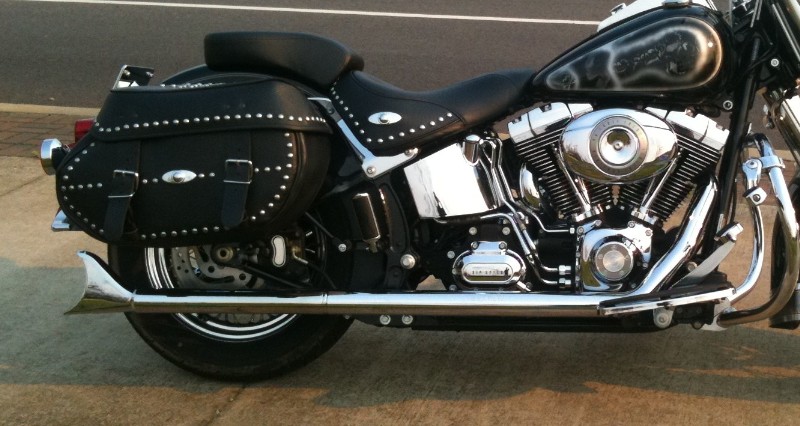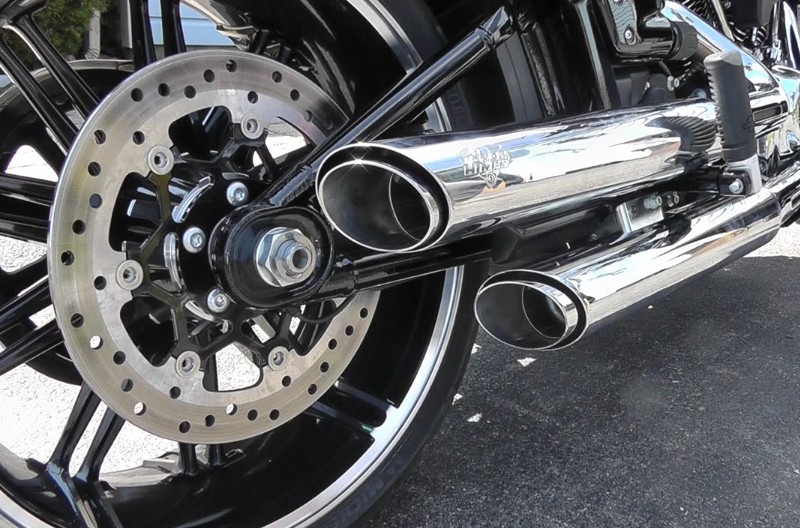Why Consider a Harley-Davidson Aftermarket Exhaust
This article discusses why you should consider a Harley-Davidson aftermarket exhaust and how to choose one.
If you’re looking for ways to modify your Harley, you’re not alone. Despite being the company with the richest heritage in the business and bike designs tuned for optimal performance, riders still want more.
And there are thousands of parts to get that done. Anyone looking for more power is well served by the dozens of aftermarket exhaust modifications. These also promise style to suit individual needs and an exhaust note to get you noticed.
Shopping for exhaust is one thing, but choosing the right one is another. You’ll want something that’s tailored to the bike itself in terms of compatibility and fit, while still adding low-down torque and wrapped in decent metal that goes well with the rest of the bike. While factory exhausts have gone through thorough testing, choosing an aftermarket Harley Davidson exhaust offers riders a whole lot more options.
Building on Perfection: Why Change Your Stock Harley Exhaust?
Power and Torque
Harley’s aren’t brimming with top-end power, but they have a nice dose of torque that pulls the bike from a standstill with a good nudge in the back. But both HP and torque numbers can be substantially improved when going with aftermarket systems.
These deal with things like restrictions, back pressure, velocity, and scavenging to get spent gases out faster and enable more efficient combustion. In a word, performance exhausts let the engine breathe, enabling consistent performance and power when you need it.
This all translates to better acceleration, easier overtaking, and an effortless feel when you turn the throttle. Full-on systems provide the best gains, with different piping and layouts from the headers to the tips.
Conservative estimates are somewhere in the range of 10 percent. For something like the Milwaukee Eight 114-cubic-inch engine in the Street Bob, which puts out a healthy 100 hp at the rear wheel, you’ll have another 10 horses to play with.
Sound

The V-twin rumble screams ‘Harley’ possibly more than anything else. This has been a bit tamed on the newer bikes owing to regulations regarding emissions and noise levels. Factory muffler designs have changed accordingly, with the use of baffles to bring decibels down a few notches.
If you still want the typical throaty Harley sound of old with a bit more presence, there are hundreds of muffler combos to do justice to the engine.
Here you can go with drag mufflers for the loudest note, shorty or staggered variants with aggressive baffles matching drag types for all-around loudness, or straight pipes popular for both substance and style.
Classic fishtail mufflers are also coming back and are now fitted with straight pipes for a low, rumbling sound.
Anyone keen on altering the sound while riding should look at the few options with electronic valving. These can go loud or quiet and are adjustable to suit tastes. A bonus is that they’re also perfectly street-legal.
Build and Materials
The build and materials on factory Harley exhausts are second to none, especially when compared to rival brands on similar bikes. But even here there is room for improvement, with Harley itself offering an extensive line of OEM Screamin’ Eagle performance parts with a lot of focus on the exhaust.
Things like wider diameter slip-on mufflers in powder-coated or Chromoly steel help with exhaust velocity and airflow, while still producing a deep rumble.
Or go with Cannon exhausts in the Pan-America, with titanium mufflers for lower weight, steel mid-pipes for durability, and carbon end caps for heat resistance and looks. The only downside is that you’ll be paying quite a bit for all that you get.
There’s more variety and lower prices with third-party producers. Here you’ll see stainless steel, aluminum, carbon fiber, titanium, and ceramics, paired with advanced laser cutting and CNC machining tech to get seamless edges and parts that can withstand higher temperatures.
The addition of integrated heat shields also helps in this respect. Steel tubing can also be treated or coated, with chromed or powder coatings in either polished, gloss, or matte finishes giving riders the look they’re after.
Choosing the Right Configuration
There are two basic configurations when looking for a Harley-Davidson exhaust. The first are slip-ons, and the second are full exhaust systems.
Slip-Ons
These are essentially mufflers that fit the stock midpipe or header pipes. They come in some interesting designs, from straight to swept mufflers, a range of materials (stainless steel in the outer shells to ceramic inserts and baffles), varying end-cap designs, and a range of finishes.
The options here all point to added style, so if you’re tired of your old Harley muffler, aftermarket slip-ons are your safest bet without breaking the bank.
While some do have performance benefits, slip-ons are more about altering the sound profile of your bike. Here you can go from quiet to loud, low to high, tinny to throaty, rough or smooth.
As mentioned, electronic systems have the widest sound profiles, and these are good if you like experimenting with the sound to suit different riding styles.
Lastly, slip-ons are the easiest to get on (it’s in the name) using the provided brackets and hardware.
Full
Full exhausts replace the entire piping from the manifold all the way to the end caps. Aftermarket systems often go with unique and improved header and collector designs to get gases out faster, as well as wider diameters (3 inches or more in most systems) to increase velocity and reduce the likelihood of back pressure.
Popular varieties are 2-in-1 systems that replace stock headers, and include bigger collector pipes, as well as a single muffler, albeit in a wider diameter or megaphone profile. These get the most out of the engine in terms of power (with better scavenging) and consequently more body in the sound
2-in-2 systems have separate header and mid-section pipes from the ports that terminate into separate mufflers. This is a more popular design and is seen on most Harleys today. While they fall somewhat short of the outright gains seen in 2-in-1 systems, these do make a style statement and look particularly good on bigger bikes. Though rare, 2-1-2 systems can also be seen, but they are exceptionally pricey.
Summing Up
Choose your next Harley exhaust based on sound, power gains, and looks. All aftermarket types (whether slip-ons or full systems) are well-built, use high-quality materials, are easy to install, and have some proprietary tech for added thrills.
Ensure that what you’re getting fits the bike, with the model and production year being deciding factors. And lastly, weigh your budget against products from well-known brands to get your money’s worth.
